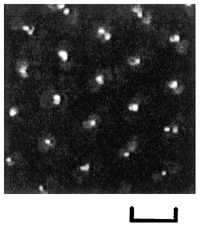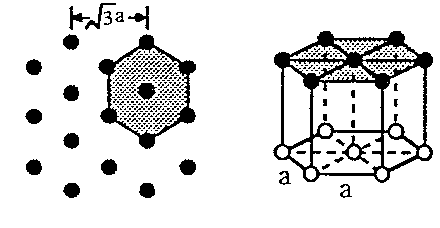

Negatively-charged dust particles in plasmas can form crystal-like structures. Mitsuhiro Nambu, Sergey Vladimirov and Osamu Ishihara have suggested that the mechanism by which this occurs may be analogous to the effect which produces superconductivity.
Plasmas are essentially gases in which the constituent particles are electrically charged. Each particle is either positive or negative according to whether it has an excess of protons (+) or electrons (-). In high-temperature plasmas, such as in a fluorescent light tube or in the region around a star, most of the particles are simple, consisting of single electrons and positively charged atomic nuclei. However in recent years a great deal of interest has developed in so-called ``dusty plasmas''. These are low-temperature plasmas that contain highly charged particulates which may be as large as a micron (a thousandth of a mm) across.
Recent experiments have revealed that the particulates embedded in plasmas have an intriguing tendency to form crystalline structures - i.e. regular, repeating arrangements of particulates. The formation of these structures has been difficult to explain because the electrostatic forces between the negatively-charged dust particles themselves are repulsive, since particles with the same sense of electric charge repel one another. Prof. Mitsuhiro Nambu (Kyushu U.), Sergey Vladimirov and Prof. Osamu Ishihara (TTU) have suggested that the explanation may lie in collective effects, where large numbers of the particles act in a coherent manner, between the dusty particles and the flow of positively charged ions through the static crystalline structure towards the negatively charged electrode near which the crystalline structure forms. These effects are analogous to the formation of so-called ``Cooper pairs'' of electrons that give rise to superconductivity, and this theory explains the formation of both square and hexagonal crystals, as observed experimentally.


A micrograph and sketches of an hexagonal lattice, similar to a honeycomb, which is one of the crystal structures observed in dusty plasmas. The bar below the micrograph corresponds to 200 micrometers. In the sketch the black dots represent the particulates in the top layer of the crystal, the white dots show the second layer and the shaded regions are perpendicular to the optical axis. Courtesy of Professor Lin I, National Central University, Taiwan.